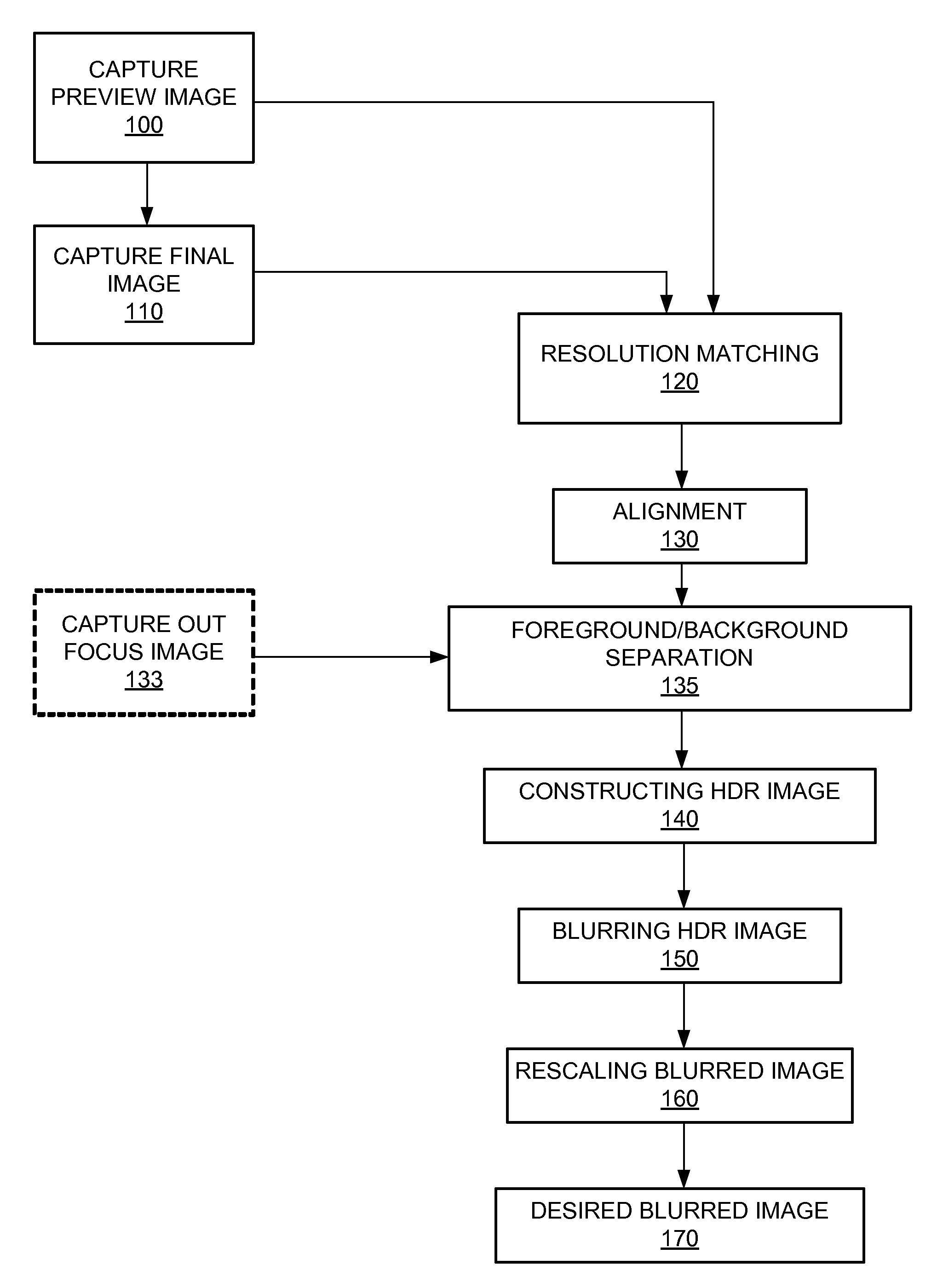Image blurring
a blurring technique and image technology, applied in the field of image blurring, can solve the problems of manual intervention, time-consuming, and often less appealing visual effects, and achieve blurring techniques that are simply not realisti
- Summary
- Abstract
- Description
- Claims
- Application Information
AI Technical Summary
Benefits of technology
Problems solved by technology
Method used
Image
Examples
Embodiment Construction
[0031]Techniques and components for obtaining a more realistic blur in a digitally-acquired image similar to the low DOF blur generated by a conventional film camera are provided.
[0032]The low contrast and sharpness associated with conventional blurring techniques are mitigated or reduced or eliminated in accordance with embodiments described herein. Furthermore, lens effects of circle of confusion are emulated, as described in more detail below.
[0033]As illustrated in FIGS. 2a-2b, saturation clipping leads to a loss of high dynamic range, HDR, information about the image. In one embodiment of the present invention, this information is advantageously recovered to provide a more realistic blurring of an image of a scene.
[0034]Referring now to FIG. 3, final a low-resolution non-flash image of a scene (herein after referred to as a preview image) is captured at 100 prior to capturing a full-resolution flash image of a scene at 110. However, it will be appreciated that alternatively the...
PUM
 Login to View More
Login to View More Abstract
Description
Claims
Application Information
 Login to View More
Login to View More - R&D
- Intellectual Property
- Life Sciences
- Materials
- Tech Scout
- Unparalleled Data Quality
- Higher Quality Content
- 60% Fewer Hallucinations
Browse by: Latest US Patents, China's latest patents, Technical Efficacy Thesaurus, Application Domain, Technology Topic, Popular Technical Reports.
© 2025 PatSnap. All rights reserved.Legal|Privacy policy|Modern Slavery Act Transparency Statement|Sitemap|About US| Contact US: help@patsnap.com



